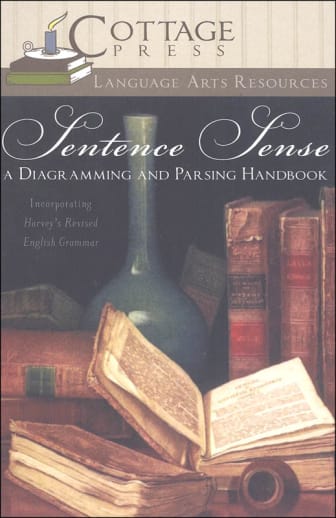This Diagramming and Parsing Handbook is a required resource for the Intermediate and Upper levels of the Cottage Press Language Arts courses. Each of its five sections (Etymology, Syntax, Sentence Diagramming, Parsing, and Exercises) serve interesting and useful purposes. Based on the English instruction found in the 19th century Harvey's Grammar, you can expect terms to sound a bit old-fashioned to our ears. Harvey's Practical Grammar of the English Language was revised in 1878 and is popularly known as Harvey's Revised Grammar.
The first section titled Etymology involves the classification, derivation, and properties of words. Words are the building blocks of our language. Combined into sentences, they express thoughts. In order to rightly understand sentences and, hence, composition, we need to understand what each word means (its definition) and how it is used in the sentence (it's part of speech). Section two titled Syntax looks at the construction of sentences or, in other words, the rules that govern how sentences are put together. Or, rather, how they should be put together. By mastering syntax skills, we understand the systematic structure of the language which is an essential step in effective communication. The third section deals with Sentence Diagramming, which is a traditional language arts skill. The diagramming conventions used throughout the Cottage Press courses differ from those used in Harvey's, but cover the same grammar concepts. Section four introduces Parsing, which is an oral exercise that applies technical grammar concepts to real sentences. The last section provides Exercises taken directly from Harvey's Revised Grammar; listing both those found in the various Cottage Press courses along with additional exercises of a similar nature. The extra exercises can be used for additional practice. While the Teaching Helps books supply answers for all exercises used in the courses, there is an online answer key for the extra exercises.
Packed with examples (diagramming and parsing), definitions, and rules, this would be an extremely useful resource for anyone embracing a classical approach to grammar. It's a necessary resource for the Cottage Press Language Arts courses. The appendix includes Harvey's 120 – a list of irregular verbs showing present and past tenses, along with perfect participles. 316 pgs, pb.

